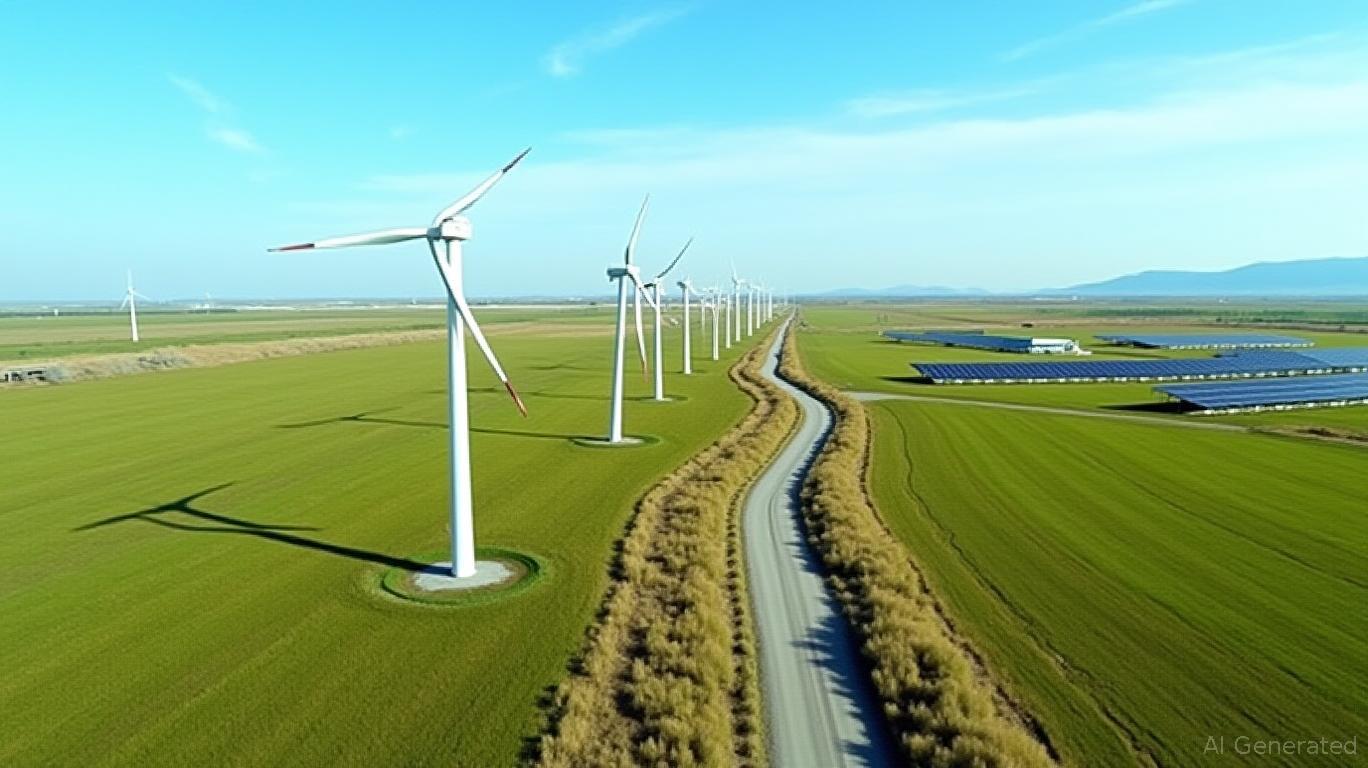The Dawn of Renewables: Navigating the Shift from Fossil Fuels to Green Infrastructure in Canada
The termination of TC Energy's Keystone XL Pipeline in 2021, finalized by a 2024 international tribunal ruling, marks a pivotal moment in Canada's energy landscape. This decision, paired with evolving Bank of Canada policies and federal climate mandates, underscores a definitive pivot toward sustainable infrastructure. For investors, this signals a critical juncture to reassess opportunities in green energy while tempering exposure to fossil fuel-dependent sectors.
Ask Aime: Will Keystone XL Pipeline's termination impact U.S. energy costs?

The End of an Era: Why the Keystone XL Pipeline Failed
TC Energy's abandonment of the $8 billion project was driven by a trifecta of forces:
1. Legal and Regulatory Headwinds: The Biden administration's 2021 permit revocation, upheld by a 2024 tribunal ruling, eliminated any pathway for revival. Legal costs and liabilities, including a rejected $15 billion claim, further deterred reinvestment.
2. Market Realities: Declining oil demand (driven by EV adoption and efficiency gains) reduced the need for new pipelines. The Energy Information Administration forecasts U.S. gasoline consumption will drop by 12% by 2030, undermining fossil fuel infrastructure economics.
3. Strategic Shifts: TC Energy itself has pivoted to renewables, allocating $20 billion to projects like grid modernization and hydrogen infrastructure. Its 2025 focus on net-zero operational plans signals alignment with global decarbonization trends.
The chart illustrates TRP.TO's stagnation post-2021 against ACWEE's 40% rise, reflecting investor preference for renewables.
Canadian Monetary Policy: A Mixed Bag for Energy Sectors
The Bank of Canada's April 2025 Monetary Policy Report highlights key risks and opportunities:
- Inflation and Trade Uncertainty: While inflation has dipped to 1.7%, lingering trade tensions with the U.S. threaten energy exports. A “moderate trade conflict” scenario projects temporary relief via carbon tax removal, but prolonged disputes could destabilize traditional energy firms.
- Renewable Support: The Bank's neutral rate stance (2.75%) and emphasis on financial stability create a low-risk environment for long-term green investments. The federal Clean Electricity Strategy (2035 decarbonization target) and interprovincial grid projects further bolster renewable sector fundamentals.
- Regulatory Gaps: Withdrawal of major banks from climate initiatives (e.g., RBC leaving the Net Zero Banking Alliance) introduces risks for fossil fuel projects, as capital flows increasingly favor low-carbon ventures.
Rising inflation and stable rates signal cautious monetary policy, favoring predictable returns in renewables over volatile fossil fuel markets.
Ask Aime: Why did TC Energy abandon the Keystone XL Pipeline, and what impact does this have on investors in the energy sector?
Investment Themes: Riding the Green Wave
- Green Infrastructure Plays:
- Solar/Wind Power: Companies like Brookfield Renewable Partners (BEP.UN) and Canadian Solar (CSIQ) benefit from grid modernization and federal subsidies.
- Critical Minerals: Firms supplying lithium, cobalt, and rare earth metals (e.g., Pretium Resources (PVG)) are vital for EV batteries and renewable tech.
Hydrogen Energy: Hydrogen One Energy (HON.TO) and partnerships with Alberta's oil sands firms to repurpose infrastructure for green hydrogen production offer growth potential.
Regulatory Risks for Traditional Energy:
- Oil & Gas Sector: Tariffs, carbon policy uncertainty, and declining demand make firms like Cenovus Energy (CVE.TO) and PetroCanada vulnerable to stranded asset risks.
- Banking Sector: Institutions exposed to fossil fuel loans (e.g., Toronto-Dominion Bank (TD)) face ESG-driven investor flight unless they pivot to climate-aligned financing.
Final Take: Position for the Transition, Not the Status Quo
The death of Keystone XL is not just a project failure—it's a watershed moment. Investors should:
- Allocate to renewables: Prioritize firms with scalable green projects and government-backed mandates.
- Avoid fossil fuel-heavy portfolios: Regulatory and demand headwinds will amplify volatility in traditional energy.
- Monitor trade policies: U.S.-Canada relations will dictate near-term sector performance, but long-term trends favor sustainability.
The writing is on the pipeline: Canada's energy future is electrifying.
Gary Alexander
June 6, 2025

Comments
No comments yet